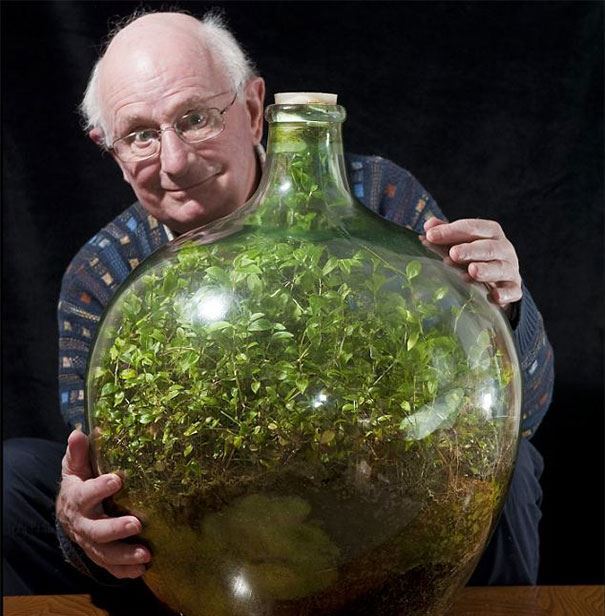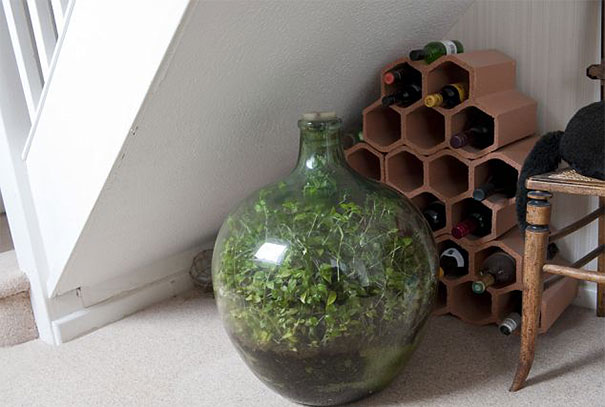David Latimer first planted his bottle garden in 1960 and last watered it in 1972 before tightly sealing it shut ‘as an experiment’. The hardy Spiderworts plant inside has grown to fill the 10-gallon container by surviving entirely on recycled air, nutrients and water.
This is the definition of low-maintenance!
How The Bottle Garden Grows
Bottle gardens work because their sealed space creates an entirely self-sufficient ecosystem in which plants can survive by using photosynthesis to recycle nutrients.
The only external input needed to keep the plant going is light, since this provides it with the energy it needs to create its own food and continue to grow.
Light shining on the leaves of the plant is absorbed by proteins containing chlorophylls (a green pigment).
Some of that light energy is stored in the form of adenosine triphosphate (ATP), a molecule that stores energy. The rest is used to remove electrons from the water being absorbed from the soil through the plant’s roots.These electrons then become ‘free’ – and are used in chemical reactions that convert carbon dioxide into carbohydrates, releasing oxygen.
This photosynthesis process is the opposite of the cellular respiration that occurs in other organisms, including humans, where carbohydrates containing energy react with oxygen to produce carbon dioxide, water, and release chemical energy.
But the eco-system also uses cellular respiration to break down decaying material shed by the plant. In this part of the process, bacteria inside the soil of the bottle garden absorbs the plant’s waste oxygen and releasing carbon dioxide which the growing plant can reuse.And, of course, at night, when there is no sunlight to drive photosynthesis, the plant will also use cellular respiration to keep itself alive by breaking down the stored nutrients.
Because the bottle garden is a closed environment, that means its water cycle is also a self-contained process.
The water in the bottle gets taken up by plants’ roots, is released into the air during transpiration, condenses down into the potting mixture, where the cycle begins again.


Sorry, the comment form is closed at this time.